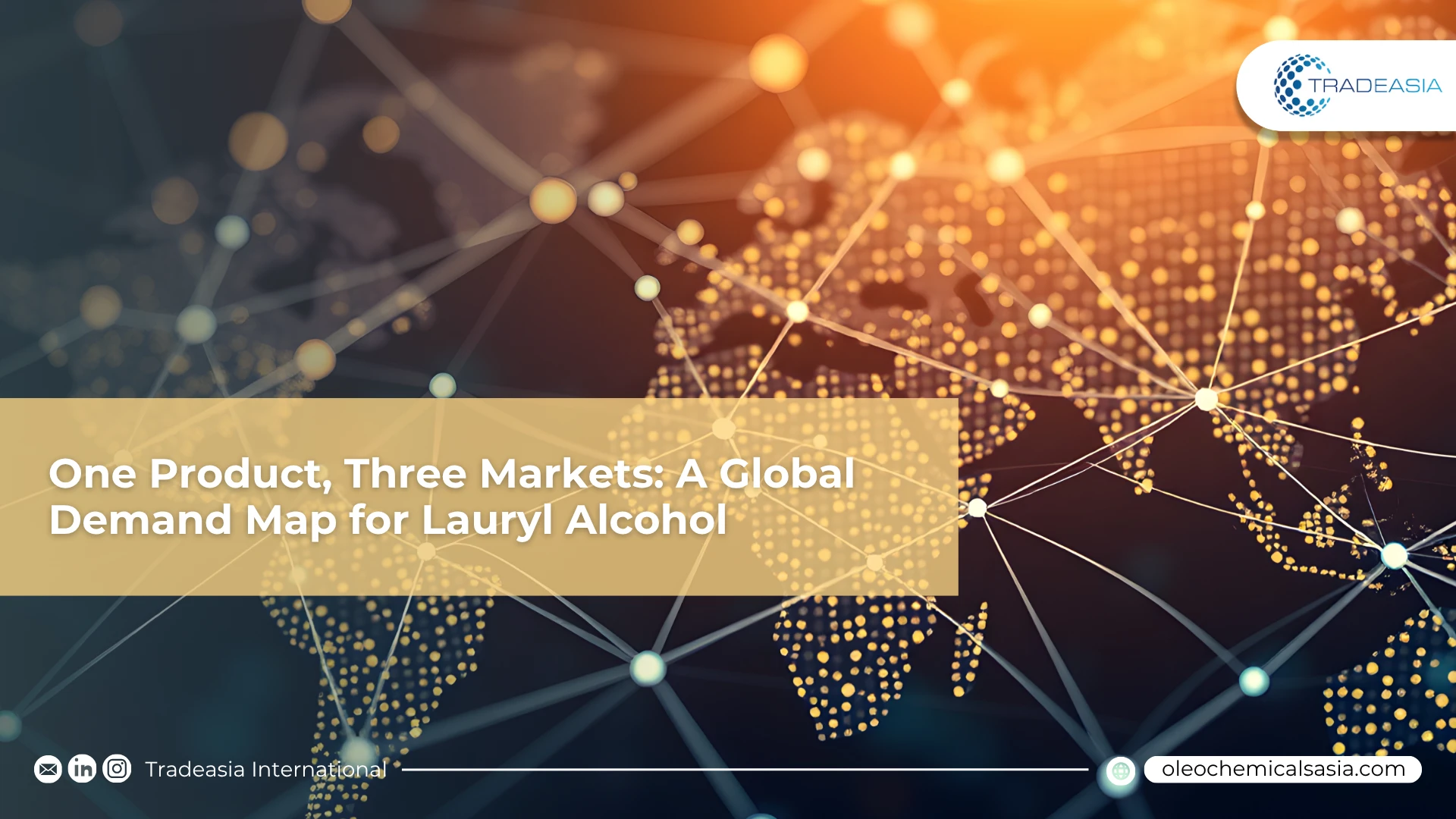One Product, Three Markets: A Global Demand Map for Lauryl Alcohol

Table of Content
-
APAC: The Unstoppable Volume Engine
-
Europe & North America: The Specialization Markets
Lauryl Alcohol is a single global commodity, but the reason it's purchased varies dramatically by region. Understanding these differences is the key to a successful global trade strategy. The ~$3.5 Billion Lauryl Alcohol market is clearly segmented, with Asia-Pacific (APAC) consuming 45%, Europe 25%, and North America 20%. Each market operates on a different set of rules.
A successful global trading strategy relies on this regional nuance. Tradeasia International leverages its on-the-ground presence in these key markets, ensuring our partners aren't just buying Lauryl Alcohol, but buying the right Lauryl Alcohol for their specific end-use, sourced directly from the most efficient palm and oleochemical hubs.
APAC: The Unstoppable Volume Engine
APAC is the undisputed volume powerhouse, consuming over 1.5 million metric tons of fatty alcohols annually. Here, the story is about mass-market scale. Demand is driven by a booming domestic HPC market, which is growing at a 5.5% CAGR on its own. Consequently, an estimated ~80% of Lauryl Alcohol in Asia is a pure volume play, channeled directly into standard SLES/SLS production for detergents and soaps.
This dual demand-massive volume for APAC, high-spec for the West-requires a truly flexible supply chain. The ability to ship high volumes of standard-grade Lauryl Alcohol from an Indonesian palm refinery... is a cost game. But that same supply chain must be agile enough to pivot and send a container of high-purity, certified alcohol to Germany.
Europe & North America: The Specialization Markets
In contrast, Europe (a ~$1.1 Billion market) is defined by regulation and sustainability. Demand is highest for RSPO Mass Balance (MB) certified Lauryl Alcohol, which regularly commands a $40-$60/MT premium. Growth isn't in standard soaps but in Lauryl Alcohol-derived bio-lubricants and cosmetic emollients that comply with strict REACH standards. North America is a hybrid market; it has a large "sulfate-free" consumer base and strong industrial demand for Lauryl Alcohol derivatives in oil & gas and metalworking fluids. Simply put: selling Lauryl Alcohol in Asia is about volume; selling in the West is about certification and technical specialization.
Sources:
-
Oleochemicals Asia: APAC Market Trends & Certification News
-
Mordor Intelligence: Fatty Alcohols Market Size by Region
-
Cosmetics Europe: European Personal Care Market Statistics & Regulations

Leave a Comment